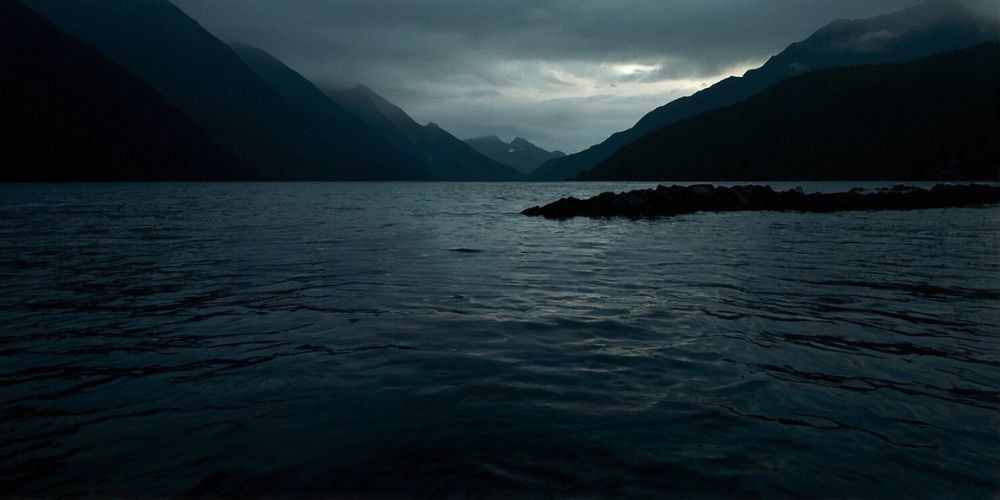The Dark Side of Connection: Unraveling Fear and Friendship in Speak No Evil
- Sep 30, 2024
- 1219

Emerging from the shadow of established horror narratives, "Speak No Evil" presents a fresh twist on fear and societal dynamics. Set in an unexpected location and rooted in profound psychological tension, this film bridges the gap between two cultures. Directed by James Watkins, this reimagining of a Danish masterpiece delves into the complexities of interpersonal relationships, turning seemingly mundane exchanges into a thrilling exploration of horror. As it prepares for release, Watkins reflects on the journey that brought this project to fruition—a journey steeped in collaboration and cinematic evolution.
Long-Ongoing Conversations

The inception of "Speak No Evil" wasn't a swift undertaking. Writer-director James Watkins found himself in a dialogue with Blumhouse Productions that spanned 16 years, marked by a shared passion for horror that eventually led to this innovative project. The two first connected after Watkins’ film "Eden Lake," where discussions began revolving around potential collaborations. Over the years, they pondered various projects, none of which found their way to fruition. However, hope lingered, and persistence paid off when a 2022 Danish film landed in Watkins' inbox, rekindling their partnership.
Inspired by Rich Heritage
Upon viewing the original film by Christian Tafdrup, Watkins experienced a surge of inspiration. He recognized the powerful themes and brutal storytelling as something that could be reinterpreted for a new audience. This moment of clarity was crucial not only in reviving his longstanding dreams of working with Blumhouse but also in finding a narrative that resonates on both emotional and psychological levels. The film is as much a personal reflection of human experiences as it is a horror story.
A Glimpse into the Plot

At the core of "Speak No Evil" is a family—a father, Bjørn, portrayed by Morten Burian; his partner, Louise, brought to life by Sidsel Siem Koch; and their daughter Agnes. As they vacation in picturesque Tuscany, Italy, the family encounters a Dutch couple who become fast friends. This innocuous meeting leads to an invitation that sets the stage for exploring the darker sides of human nature when they visit their new friends’ home after returning from holiday.
Unraveling Friendships
As Bjørn and Louise arrive at Patrick and Karin's home, played by Fedja van Huêt and Karina Smulders respectively, what initially appears to be a friendly welcome quickly reveals underlying tensions. Patrick's disregard for Louise’s vegetarian lifestyle and his concerning treatment of their mute son Abel serve as harbingers of deeper issues. This escalating discomfort encapsulates the film's exploration of social dynamics and highlights how quickly a seemingly benign friendship can spiral into something threatening.
Character Depth and Motivations

One of the film's notable assets is its rich character development. In Watkins' adaptation, James McAvoy's portrayal of Paddy Feld brings to life a nuanced character—a passionate doctor whose mercurial nature starkly contrasts with the carefree joy of the vacation setting. His dynamic with his wife, Ciara, played by Aisling Franciosi, hints at a couple burdened by their own shadowy histories. Watkins masterfully crafts these interactions, creating complex characters whose motives propel the eerie storyline with depth and intrigue.
Localizing a Global Concept
Transforming a Danish tale into an English context presented challenges that Watkins embraced. The cinematic journey involved a careful consideration of cultural nuances and societal expectations. He sought to balance the prevailing stereotypes between British and American personas—where the British are often portrayed as restrained and the Americans as boisterous. By integrating the reserved nature of East Coast Americans into the narrative, he encourages spectators to examine the intricacies of human behavior in a new light.
Societal Reflections

The movie is more than just a chilling tale; it is an examination of social interactions and the hidden horrors that lie within everyday life. Watkins draws from inspirations like Michael Haneke and Ruben Östlund, alongside elements from "The White Lotus," which highlight the queasy interplay of societal norms. The fear that creeps in during a dinner party or a casual gathering is just as compelling as traditional horror imagery, making the mundane terrifying.
New Directions in Horror
By reinterpreting the source material, Watkins has opened a dialogue about the evolution of horror films. This adaptation deviates from typical genre tropes, opting instead for gradual tension and psychological depth. The film’s unique storytelling approach allows it to serve as both an examination of character and a critique of modern societal interactions, engendering a broader conversation about the genre’s role in examining human nature.
Not Just Another Home Invasion
Watkins notes that while the film may echo themes of home invasions, its essence transcends the traditional framework. The interplay of escape and entrapment is portrayed in a nuanced manner that challenges audience expectations. By placing Bjørn and Louise in the position of escapees from a seemingly cushy life, the film distills horror down to the essence of relational dynamics rather than vivid gore.

Anticipation for Release
Fans eagerly await the release of "Speak No Evil," which is gearing up for widespread viewership in both the United Kingdom and the United States. The motion picture promises to ignite conversations among horror aficionados and casual viewers alike, stirring reflections on the fragility of friendships and the undercurrents of human interactions. Set for UK release on September 12 and US theaters the day after, the buzz around this reimagined narrative is palpable.
Enduring Themes of Fear
The chilling undertones of "Speak No Evil" remind viewers that fear often stems not from external threats, but from the people we invite into our lives. In a world where trust is frequently misplaced, the film serves as a potent reminder of the delicate tapestry woven through human relations, and how quickly those threads can fray.
Beyond the Screen

Beyond thrilling audiences in theaters, "Speak No Evil" seeks to resonate on an emotional level, compelling audience to tackle their individual apprehensions and the unsettling realities of building connections. As the conversation around horror continues to evolve, this film stands as a testament to the genre's ability to reflect societal nuances and provoke introspection among its audience.
Looking Forward to Future Projects
As Watkins reflects on the journey to this film, he acknowledges that it's just the beginning. The collaboration with Blumhouse has invigorated his creative process, and he looks forward to new projects that delve into these rich themes. The world of horror is continually changing, and Watkins is poised to contribute further intriguing narratives that will entertain and challenge audiences.
As "Speak No Evil" prepares to make its cinematic debut, the fusion of horror and social commentary promises to deliver an unforgettable experience, urging viewers to examine the nuances of kindness, trust, and terror as they unfold on screen.